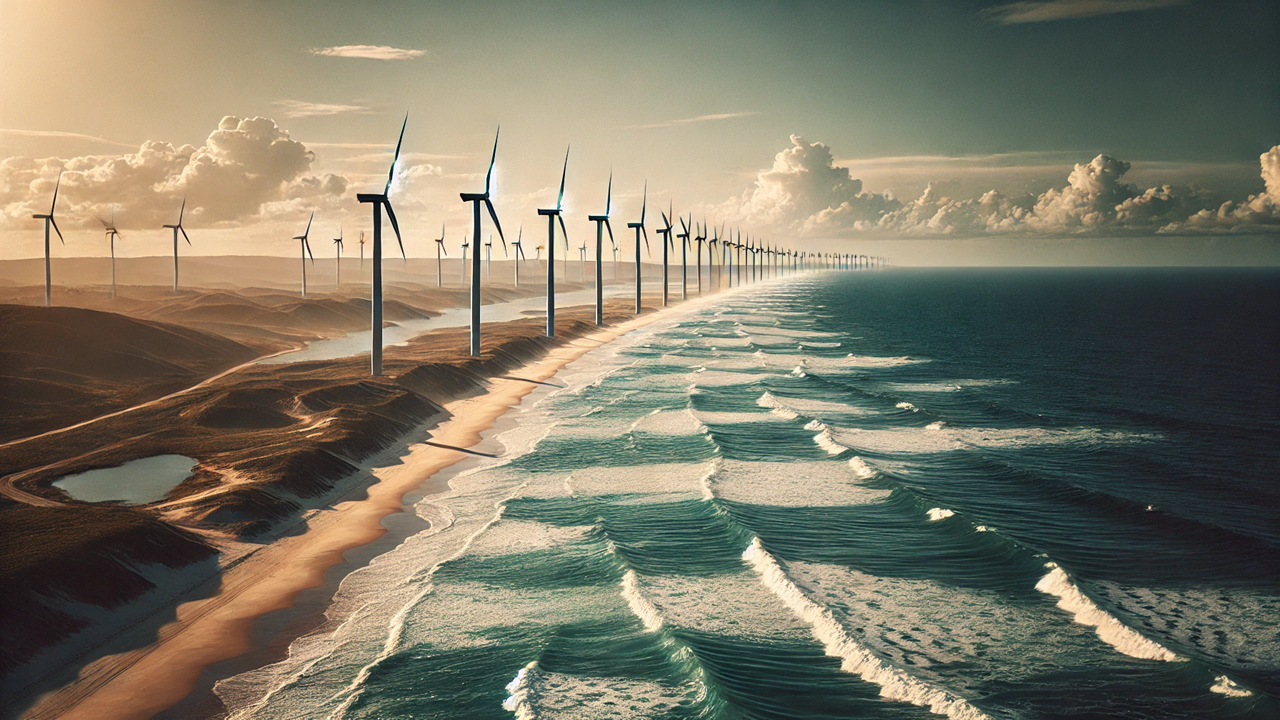Brazil's Offshore Wind Power: Charting the Future of Energy Security and Economic Growth
Brazil's exploration of offshore wind energy, detailed in the Scenarios for Offshore Wind Development in Brazil report by the World Bank, presents an opportunity to harness the country’s vast wind resources to enhance energy security and drive economic growth. The report outlines three development scenarios, each with distinct challenges and benefits, offering a roadmap to integrate offshore wind into Brazil’s energy mix.

Brazil, already renowned for its clean energy mix dominated by hydroelectric power, is eyeing a new frontier in renewable energy: offshore wind. With a technical potential exceeding 1,200 gigawatts (GW), the country can become a global leader in offshore wind energy. A recent report titled Scenarios for Offshore Wind Development in Brazil by the World Bank, in collaboration with Brazilian authorities lays out a roadmap for this ambitious venture. The report doesn't just offer a vision; it presents a detailed analysis of how Brazil can navigate the challenges and seize the opportunities that offshore wind presents.
Abundant Resources: The Wind in Brazil’s Sails
Brazil's coastline is blessed with some of the world's most consistent and potent wind resources, which could potentially contribute significantly to the country's energy grid. The report highlights that Brazil has over 480 GW of potential for fixed-foundation offshore wind projects, with another 748 GW available through floating foundations. These resources are not only vast but are also situated close to major population centers, making them highly advantageous for meeting the country’s energy demands.
Offshore wind energy offers a unique complement to Brazil's existing energy mix. Unlike hydroelectric power, which can be seasonal, wind energy provides a more consistent and reliable source of electricity. Moreover, developing this resource could enhance Brazil's energy security, reduce its carbon footprint, and maintain its position as a leader in renewable energy.
Scenarios for Development: A Spectrum of Possibilities
The report outlines three potential scenarios for offshore wind development in Brazil, each reflecting different levels of ambition and investment.
Base Case Scenario: This conservative approach envisions a modest rollout of offshore wind, with 4 GW of capacity by 2035 and 16 GW by 2050. In this scenario, offshore wind would account for around 3% of Brazil's total energy generation by mid-century.
Intermediate Scenario: A more assertive strategy, the intermediate scenario targets 8 GW of offshore wind capacity by 2035 and 32 GW by 2050. This would increase offshore wind's share of the energy mix to 6%.
Ambitious Scenario: For those advocating for a rapid transition, the ambitious scenario is the most aggressive, with 20 GW by 2035 and a staggering 96 GW by 2050. This would position offshore wind as a major contributor to Brazil's energy, representing a significant portion of the country's total generation capacity.
Each scenario comes with its own set of challenges and opportunities. The Base Case scenario, while requiring less investment, offers limited impact on Brazil's energy mix. On the other hand, the Ambitious Scenario could significantly boost the country's renewable energy capacity but would require substantial investments in infrastructure, manufacturing, and workforce development.
Challenges and Opportunities: Building the Future
The journey to harnessing offshore wind is not without its obstacles. Significant investments are required, particularly in upgrading transmission networks, expanding port infrastructure, and building a robust manufacturing sector capable of supporting large-scale wind projects. The report emphasizes the importance of creating a regulatory framework that encourages investment while safeguarding environmental and social interests.
However, the potential benefits are immense. Offshore wind could generate thousands of jobs, stimulate economic growth, and solidify Brazil’s position as a leader in the global renewable energy market. Moreover, as global markets increasingly value low-carbon energy sources, Brazil's investment in offshore wind could enhance its competitiveness on the world stage.
A Roadmap for Success: Recommendations and Next Steps
To guide Brazil towards a successful offshore wind industry, the report provides 45 actionable recommendations. These span policy and regulatory frameworks, infrastructure development, environmental and social considerations, and more. The recommendations are designed to help Brazil navigate the complexities of offshore wind development while maximizing its potential benefits.
As Brazil considers these scenarios and recommendations, the choices made today will have far-reaching implications for the country’s energy future. Offshore wind offers a unique opportunity to enhance energy security, drive economic growth, and contribute to global climate goals. Whether Brazil will seize this opportunity depends on the vision and commitment of its policymakers and stakeholders.
- FIRST PUBLISHED IN:
- Devdiscourse
ALSO READ
Brazil extends Nike kit deal to 2038 and it''s worth $100 million per year, AP source says
Narmadapuram: New Hub for Renewable Energy Investment
Madhya Pradesh's Narmadapuram Sparkles with New Renewable Energy Units
Jaguar's Mitch Evans Makes Formula E History in Brazil
Brazilian Success: Gabriel Bortoleto's Rise to Formula One










